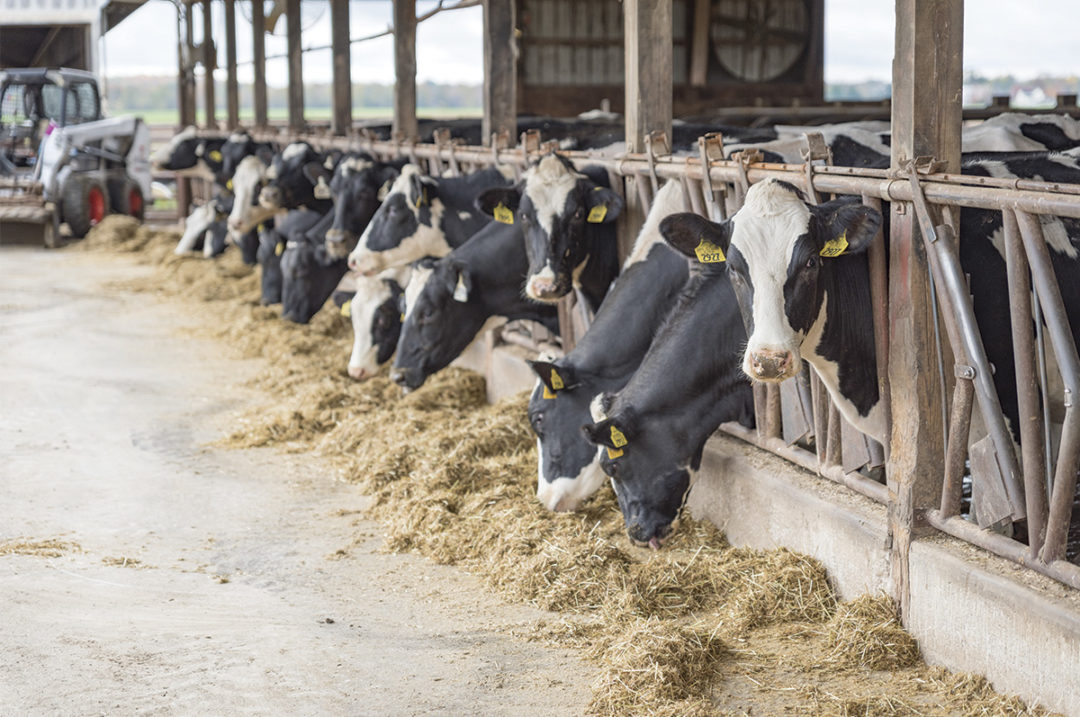Over the last 20 years, we have experienced tremendous change and have seen many advancements in the dairy industry, much of which can be attributed to research and the technologies that have been developed.
“Big data,” a term that can be defined as enormous amounts and various types of data that can be used to analyze patterns, trends and associations, has allowed researchers to better understand how dairy cow health, growth and milk production have changed over time. It has shown us that we have a different animal now, along with improved management strategies, technologies and nutrition than we did in the past. Because of this, data from 15, 10 or even five years ago may be less informative for making decisions on today’s dairy operations.
At the Purina Animal Nutrition Center in Gray Summit, Missouri, we have collected more than 2 billion data points for dairy research alone. These data points help us build our database that is used to develop stronger models, allowing for a better understanding of today’s dairy cow and helps producers make more informed decisions for their herd and, ultimately, their profitability.
Dairy modeling for effective operational decision-making
Models have been used for many years to help discover predicted outcomes on dairy farms, much like a weather forecast is used to predict the likelihood of rain on a given day. However, models used for dairy production look much different now for a variety of reasons. Some of the models used 20 years ago were generated using a small number of studies in typical factorial experiments. Now, because of continued research and the collection of data points, we have an extremely robust database from a large set of studies that allows us to build complex models that are near reality with low error, resulting in a broad number of predicted outcomes.
The challenge with these complex models is: They are more difficult to parameterize, meaning we have to ensure each underlying model functions properly and accurately to provide an outcome that is near reality. To do so, they undergo model evaluation in which they are tested against a similar model developed from another set of data points or variables. As more models are developed, there are more models to perform cross-evaluation techniques or external evaluation with independent data from different dairy farms, which means accuracy continues to improve.
You may ask: What does this mean for decision-making on a dairy operation? The answer is simple: If we have a larger database, we can develop more accurate models, which can provide more opportunities for sound decision-making for your herd and business.
Why is today’s dairy cow different?
Consumer needs have evolved over the last few decades and, as a result, the dairy industry has had to find ways to adapt to consumer demand. Historically, the focus has solely been on producing maximum milk volume. Now, with the increased demand for dairy products like cheese and butter, dairy farmers have had to prioritize milkfat production and yield versus milk volume. Milkfat provides consumers with a great source of energy and essential fatty acids and is the foundational component of all dairy products on the market. Additionally, the U.S. milk payment system shifted to component-based pricing, which rewards producers for greater fat production among other milk components.
With a focus on the manipulation of milk components, specifically increasing milkfat, many studies have been conducted and published on factors that affect milk composition and components. Researchers believe some or all the following factors have played a part in increasing milkfat yield with no changes to total milk mass.
- Improved genetics – Producers can select sires based on their expected progeny differences (EPD) for milk production and desired milk components.
- More feed types and technologies on the market – Dairy nutritionists are using feed technologies, such as fat supplements with a high concentration of specific fatty acids, to manipulate milkfat production.
- Nutrition and management – Knowledgeable nutritionists are more readily available to provide counsel on nutrition and management strategies tailored to an individual operation.
- New technology and software – The prevalence of sensor monitoring and robotic equipment to provide high-resolution data has grown tremendously. Record analysis programs can collect and integrate data from various management software to assist in decision-making at the farm level.
- Increase in data collection – The sheer amount of data collected on- and off-farm can be used as inputs for the development of complex models that can be used to generate unbiased, precise predictions of outcomes, which can inform decision-making.
As a result of these factors and as demonstrated in Figure 1, the total milkfat percentage for a Holstein 30 years ago averaged around 3.1%, and now we can expect to see the average above 4%. In research, we have even seen total milkfat as high as 4.4%.

By using big data to develop dairy models, we can continue to understand the evolution of dairy cow health, growth and milk production in our ever-changing environment, and this understanding allows producers to make decisions more accurately for their operation and to better meet consumer preferences.








